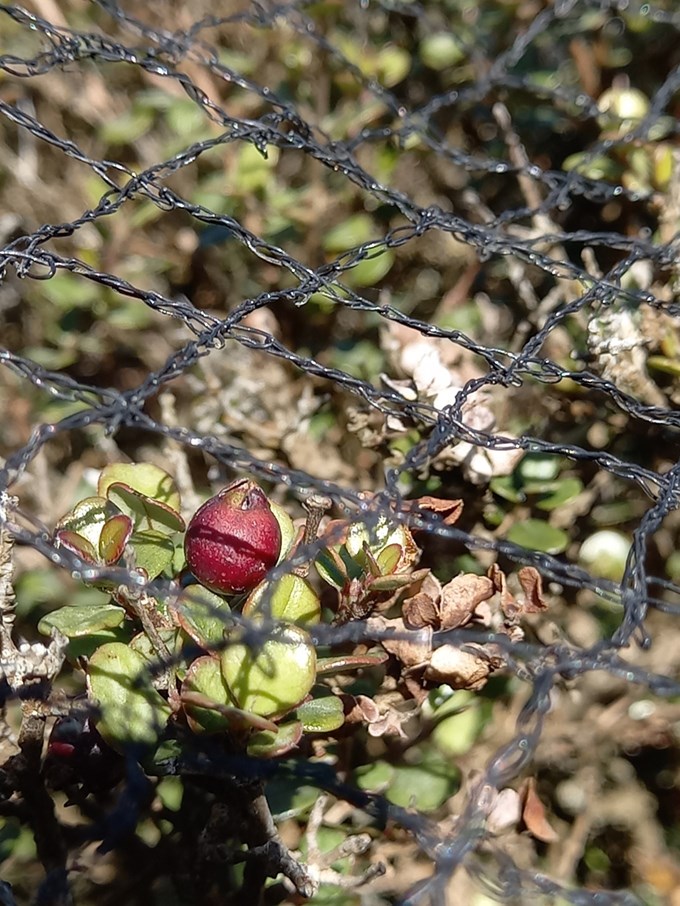It’s over six years since winds blew a new fungal pathogen onto our shores. The arrival of myrtle rust has seen many of our native species infected with the fungus.
One of those is rōhutu, a small shrub with thick heart shaped leaves and small white flowers like those of the rata or pōhutukawa, a plant that is rare across Tāmakai Makaurau.
Crown research institute SCION have been monitoring myrtle rust on a rōhutu population on Āwhitu Peninsula for the last three years.
Auckland Council’s Senior Plant Advisor Dr Rebekah Fuller says last year, due to the myrtle rust infestation, the plants were unable to put on new growth, flower, or fruit and were in danger of dying.
“Now with the introduction of the use of the fungicides, there is hope the species will be able to fight off the myrtle rust and survive.”
In response to the plight of the rōhutu, Ngāti Te Ata, Āwhitu Peninsula Landcare, SCION, Plant & Food and Auckland Council worked together to develop a pilot using fungicides, in an attempt to control the myrtle rust.
The pilot, the first of its kind in the country, was caried out on Lighthouse Station, a 1500-acre predator free ecological restoration and protection project at the end of the Āwhitu Peninsula.
And the early results are promising.
Āwhitu Peninsula Landcare’s Nicky Reynolds says some of the rōhutu is now flowering.
“Our hope is the flowers will produce seed. Half will be used in a small breeding programme to test for natural resistance and the other half stored at the Auckland Botanic Gardens to help preserve the rōhutu genetic diversity here in Tāmaki Makaurau.”
Landowner James Kellow says the work to preserve this native plant is imperative, not only for local ecosystems but for the future survival of the species and he is delighted to be involved in the project. The advice and support to help these plants prosper and survive has been incredible.
Research is still underway on a sustainable long-term method for controlling myrtle rust in our forests.
Lighthouse Station
- Lighthouse Station have planted over 300,000 native trees and plants
- 36ha of SHA has been fenced, 6ha of wetland restored, 10ha of unprotected bush fenced plus 57ha of farmland retired and revegetated


